
How to Create an Information Governance Program
 How to Create an Information Governance Program
How to Create an Information Governance Program
By Karen A. Frenkel
 Establish a Project Structure
Establish a Project Structure
Grow relationships across all departments. Define project sponsors and stakeholders. Know who those people are and their roles and responsibilities.
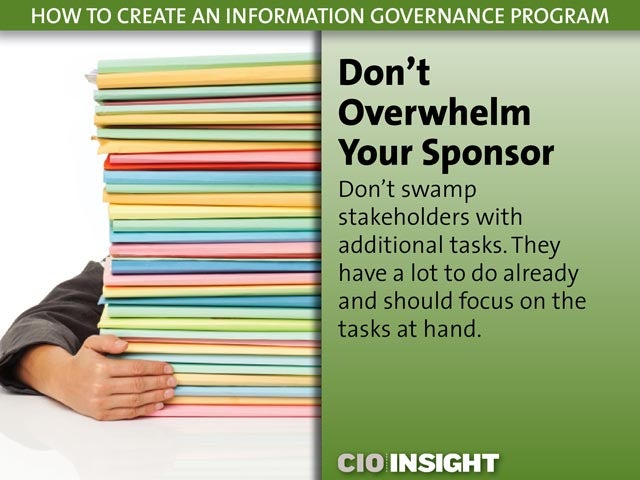 Don’t Overwhelm Your Sponsor
Don’t Overwhelm Your Sponsor
Don’t swamp stakeholders with additional tasks. They have a lot to do already and should focus on the tasks at hand.
 Assemble the Right Team
Assemble the Right Team
Identify all of the necessary players. Senior management should endorse all team members. Every department should be represented, including business users, IT and those involved in legal, risk and regulatory.
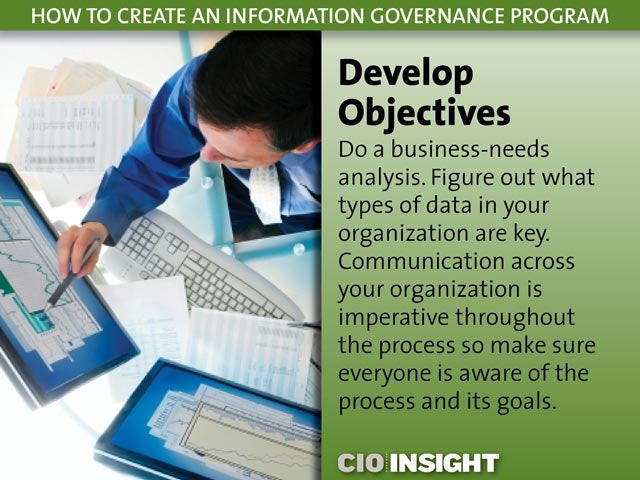 Develop Objectives
Develop Objectives
Do a business-needs analysis. Figure out what types of data in your organization are key. Communication across your organization is imperative throughout the process so make sure everyone is aware of the process and its goals.
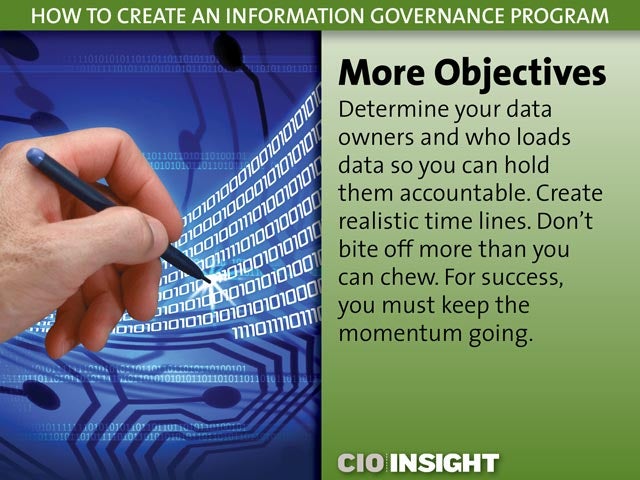 More Objectives
More Objectives
Determine your data owners and who loads data so you can hold them accountable. Create realistic time lines. Don’t bite off more than you can chew. For success, you must keep the momentum going.
 Prioritize Future State Objectives
Prioritize Future State Objectives
Undertake budget-friendly projects so you can show initial success. Early success is key. Funding will always be a consideration so continue to build support by communicating your successes across the organization and externally.
 Keep the Organization Involved
Keep the Organization Involved
Communicate. Communicate. Communicate. Make sure that all areas of the company are included. Socialize the initiative with Facebook, Twitter, Instagram, LinkedIn and others to get the word out about your IG initiative. Gamify the process, too.
 Compile Metrics
Compile Metrics
Gauge your success, identify weaknesses, communicate your program’s progress and share your findings publicly.
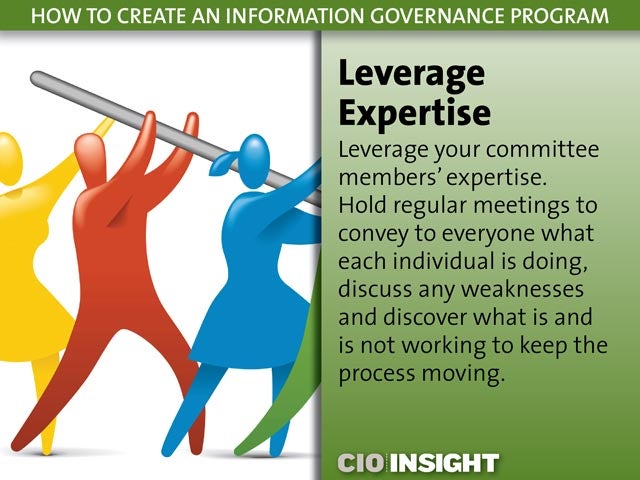 Leverage Expertise
Leverage Expertise
Leverage your committee members’ expertise. Hold regular meetings to convey to everyone what each individual is doing, discuss any weaknesses and discover what is and is not working to keep the process moving.
 Communicate to the User Community
Communicate to the User Community
Tell all your employees why IG is important. Be explicit; ambiguity is not your friend. Connect the dots for users and don’t let them do that on their own. Discuss face-to-face and encourage questions vs. hiding behind a newsletter.
 Training Provisions
Training Provisions
Create formal training for all employees. Make it part of the onboarding process for new employees. Make training mandatory for all users.
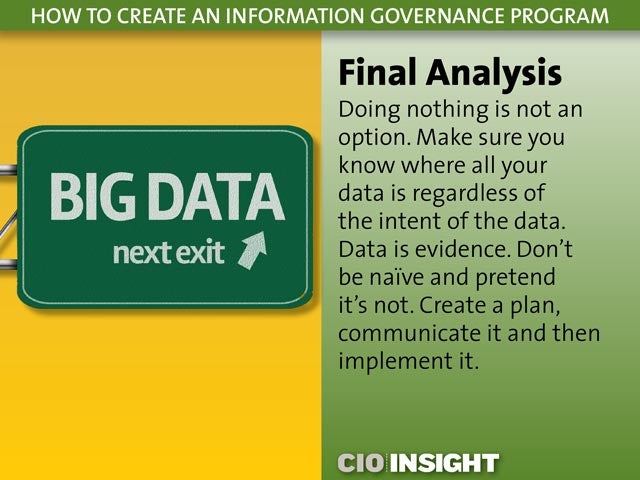 Final Analysis
Final Analysis
Doing nothing is not an option. Make sure you know where all your data is regardless of the intent of the data. Data is evidence. Don’t be naïve and pretend it’s not. Create a plan, communicate it and then implement it.